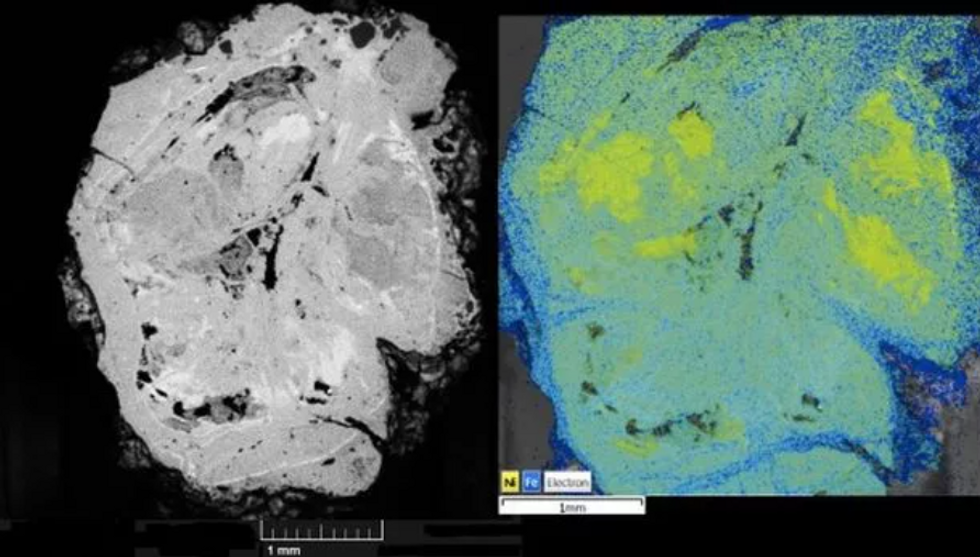Eliana Silver
Guest Reporter
Ancient ornaments discovered in Poland have been found to contain metal from space, forming one of the largest collections of meteoritic iron artefacts at a single archaeological site worldwide.
The remarkable finds were unearthed at two burial sites approximately six kilometres apart in southern Poland, at Częstochowa-Raków and Częstochowa-Mirów.
The Iron Age discoveries, dating back to 750-600 BCE, reveal that ancient inhabitants were working with space metal far earlier than previously thought.
Archaeologists discovered 26 ornaments containing iron at the sites, with four of these containing the rare space metal.

The cosmic material was found in three bracelets, an ankle ring, and a pin.
"This modest number of specimens nevertheless forms one of the biggest collections of meteoritic iron products at one archaeological site worldwide," researchers noted in their study.
According to lead researcher Dr Albert Jambon, the meteorites were not discovered by chance.
The team suggests local inhabitants may have witnessed a meteor shower and actively searched for pieces of the rare space rock.
MORE LIKE THIS:
The research also revealed that iron was not considered particularly precious at the time.
"During the Bronze Age, the price of iron was about ten times that of gold; in the early Iron Age, it sank drastically to less than copper," Jambon explained.
The research team employed sophisticated analysis techniques to study the ancient artefacts.
Using X-ray microtomography, scientists were able to examine the internal structure of the samples.

The analysis revealed the iron artefacts were crafted from an "extremely rare" type of space rock known as an ataxite meteorite.
These meteorites are distinguished by their unusually high nickel content.
Jambon's research aims to uncover the origins of iron smelting technology.
"The point of my research is to find out who, when, and where the iron smelting was discovered. To that end, we need to analyse archaeological irons and check whether they are meteoritic or smelted," he said.
Despite the relatively small number of specimens, the Polish discovery rivals the concentrations of meteoritic iron found at ancient Egyptian sites.
Find Out More...
The remarkable finds were unearthed at two burial sites approximately six kilometres apart in southern Poland, at Częstochowa-Raków and Częstochowa-Mirów.
The Iron Age discoveries, dating back to 750-600 BCE, reveal that ancient inhabitants were working with space metal far earlier than previously thought.
Archaeologists discovered 26 ornaments containing iron at the sites, with four of these containing the rare space metal.

The cosmic material was found in three bracelets, an ankle ring, and a pin.
"This modest number of specimens nevertheless forms one of the biggest collections of meteoritic iron products at one archaeological site worldwide," researchers noted in their study.
According to lead researcher Dr Albert Jambon, the meteorites were not discovered by chance.
The team suggests local inhabitants may have witnessed a meteor shower and actively searched for pieces of the rare space rock.
MORE LIKE THIS:
- Archaeology breakthrough as 3D map dating back 13,000 years is discovered - 'Exceptional findings!'
- Archaeology breakthrough as 3,500-year-old royal retreat discovered in Egypt
- Archaeology breakthrough: See inside 2,000-year-old burnt scroll from Roman town as ancient writing is 'unwrapped'
The research also revealed that iron was not considered particularly precious at the time.
"During the Bronze Age, the price of iron was about ten times that of gold; in the early Iron Age, it sank drastically to less than copper," Jambon explained.
The research team employed sophisticated analysis techniques to study the ancient artefacts.
Using X-ray microtomography, scientists were able to examine the internal structure of the samples.

The analysis revealed the iron artefacts were crafted from an "extremely rare" type of space rock known as an ataxite meteorite.
These meteorites are distinguished by their unusually high nickel content.
Jambon's research aims to uncover the origins of iron smelting technology.
"The point of my research is to find out who, when, and where the iron smelting was discovered. To that end, we need to analyse archaeological irons and check whether they are meteoritic or smelted," he said.
Despite the relatively small number of specimens, the Polish discovery rivals the concentrations of meteoritic iron found at ancient Egyptian sites.
Find Out More...
